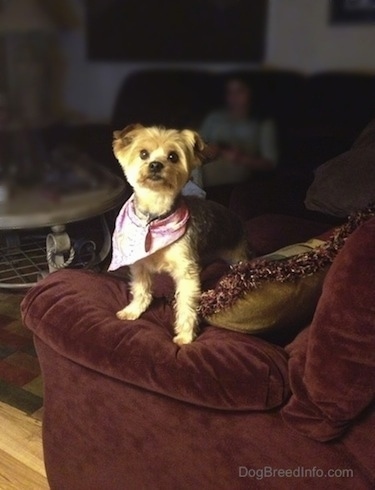
One common reason why many people are unsuccessful in changing their dog's unwanted behavior is that humans go into temporary overkill rather than making a permanent lifestyle change that everyone can live with. Some even believe they can send their dog away to a trainer and get it back fixed for life but the reality is a dog's temperament is a direct reflection of the humans it lives with. If the humans the dog lives with have not changed after the dog comes home it will shortly revert back to it’s old ways.
It often goes something like this; people notice their dog's behavior change for the worst and start reading up on dog training and they go into overkill. Demanding the dog sit 50 times a day, putting a food bowl down and pretending to eat it as the dog watches, watching the dog like a hawk waiting for it to do something wrong, sit, stay, get over here, sit, sit, sit... The home starts feeling like a prison camp. The owners are trying to become pack leaders by acting like drill sergeants and both the humans and dog are stressed. Do you really think the dog does not know you are only pretending to eat from his dog dish?

Making a dog obey a command before it can do something is a very good effective way to show leadership, but there is a line between being a leader and being on a dog to the point of harassment. Being a leader is not a temporary training session, but a lifestyle. For example, a human might decide to show leadership by making their dog sit before it can go out the door to pee. However, if the dog does not sit they will walk away as punishment and come back in a few minutes to ask the dog to sit again. Do you really want this to be a ritual you follow forever? The dog can only go out if it sits first? This approach is not only treating a dog like a human because that type of reasoning is not how a dog thinks but, in my opinion, it also misses the entire pack leader point. In addition, this might cause the dog to be confused when it comes to housebreaking. One is not a pack leader because they demand commands; they are a pack leader because they have earned the respect. Demanding a sit before being allowed to go outside and pee does not earn this respect in neither the human world nor the dog world. I am not anti making a dog sit before it can do something, like I said that can be very effective, but one must use logic and reason as to how to accomplish a lifestyle change vs. temporary training.
Instead of only worrying about sitting at times you say sit, worry more about HOW the dog goes through the door. Did he pause and wait for you to get the door knob then pause while you opened the door? Then did he look you in the eyes for a sign that it is time to move, or did he push ahead? When you let a dog out to pee ask the dog to patiently stand a few feet back so you have plenty of room to get the door open. Then allow him to go out. This should take seconds. Of course, to achieve this it might take longer in the beginning when your dog is first learning what it is you are asking of him. What you want is respect, not nothing commands of sit just because you said sit. That being said, if you say sit you should follow through and make the dog sit. Asking a dog to sit can still be benificial but the point is it is not asking a dog to sit that makes you a pack leader, but rather gaining respect from the dog in all situations, so commands are no longer necessary to control it.
Picture opening the door for a human who is carrying a large box. The person cannot get right up in front of the door or there will not be enough room for the door to open. They must stand back and wait for the door without pushing you. The goal is for the dog not to PUSH its way to the door or be in front of you while the door is opening. The dog should also watch you for the command to go ahead and go outside. Like I said, it should take seconds once the dog is trained. This can be dong in several different ways because every dog and every human are different, but you must use logic to decide what is reasonable and what is not with a dog. What you are asking for is respect not just for the dog to obey a simple command. For example, if a young child had to use the potty you would not make them do a command before they were allowed to enter the bathroom, but you would ask that they do not push you against the wall saying "MOVE" on the way to the potty.
When I let my own dogs out the door if either dog is too close when I reach for the door knob I simply say the word "back" and both dogs take a few steps backwards. The door does not open until they give me some room. When the door opens they do not automatically assume this means bolt. They pause for some kind of signal that it is OK to go. Sometimes I do not want them to go, as sometimes I am leaving and they must stay or I smell a skunk and change my mind about letting them out at that moment. This is the type of respect you want to teach and everyone in the home must be consistent so the dogs see it as a way of life. It must be a permanent lifestyle change. The sit command may be helpful when training the dog to not push but the goal should be for the dog to respect humans and give them space.
Even people who start off being true leaders often change over time. Once the dog gets settled in and the adopters start talking to neighbors and every amateur trainer they suddenly start feeling it isn't a big deal to have their dog walk a bit ahead. Then the sit, stay, and down command becomes their main focus. Those commands are very useful, but they should be seen as a secondary tool to gain control. It is important to not lose sight of the big picture of general manners. You need to be able to gain control even without telling a dog to sit.
For example, it is not important that a dog sits at every corner before crossing the street. What is more important is that the dog is just slightly behind you, watching you, exhibiting a calm state of mind even if excited about the walk and is not coiling up to spring across the street. How many people do you see stress that the dog sits at every corner and then when the owner feels it is safe they go bounding across the road with the dog running ahead of them? That is a mixed message. Instead of worrying about sitting the owner needs to communicate to the dog to follow them. Stop when they stop at intersections and walk calmly across the street when the human feels it is safe to cross. Sit is not the important aspect, calmly following is.
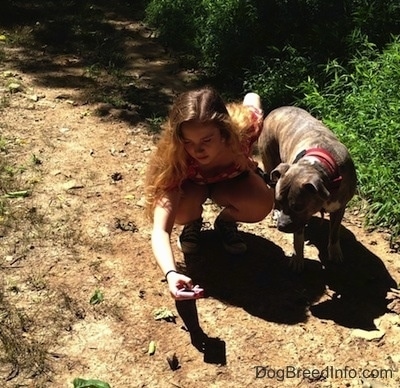
You must earn this respect. It is not something you can demand. This is a 15-year-old girl who has earned a tremendous amount of respect from her Pit Bull. So much so that she can casually stop to take pictures of a butterfly without worrying that her dog will bolt from her side. The dog follows, stops when she stops, and knows not to pounce on the butterfly. This is an example of a true pack leader, which was not earned by demanding commands, but rather the result of their entire relationship.
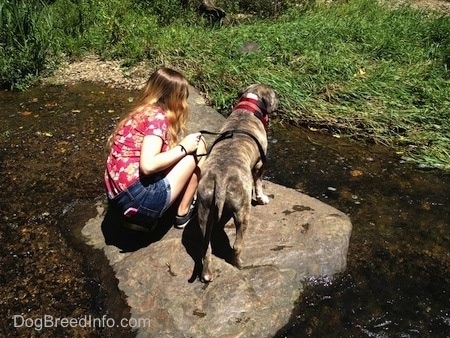
She barely has to hold the leash because the dog is not going anywhere. He's happily following her and is constantly watching her, eager to do what he thinks she wants. At home he brings her toys when she walks in the door and he loves to lie at her feet.

Watch how she walks into the store with her dog. Notice how the dog stays by her side the entire time. They are a team, a pack. She respects the dog and the dog respects her. Now picture the majority of other dogs you see walking into pet stores. The dogs that are allowed to pull ahead are rarely ever the dogs that are well behaved in other aspects of life. Often times when the dog acts excitable it is because they are stressed out.
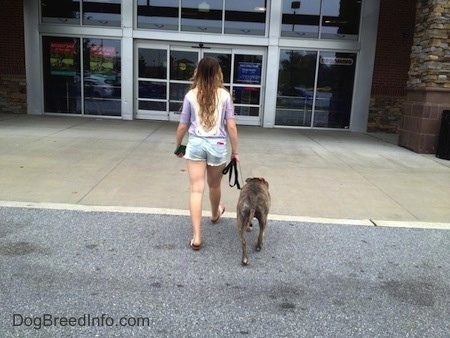
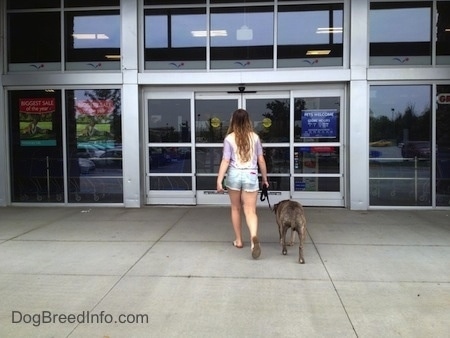
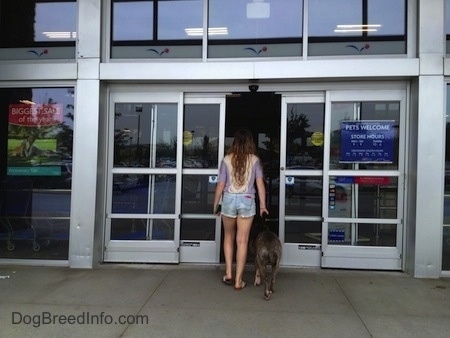
Dogs who are not taught how to respectfully walk on a leash usually pull even harder at the threshold of a door. The goal dog owners should be striving for is not a dog who can sit 50 times a day because you said so, but a dog who can remain calm and respectful in the home and in public.
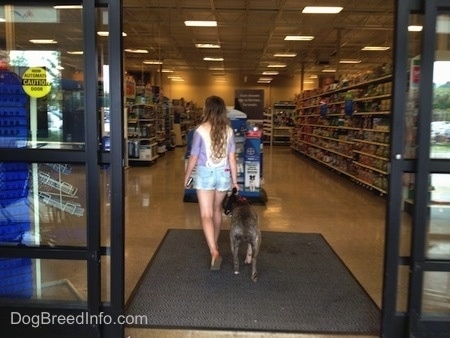

Here are a few more things people can do to gain true respect from a dog:
When you are eating ask the dog to either lie down quietly a few feet away or to leave the room. The dog should not sit there and stare at you while you eat. If you were eating lunch at a restaurant would you want the guy at the next table to be sitting across from you staring at you? If the dog is intensely staring at you while you eat send the dog away.
At feeding time place the bowl down and ask the dog to wait before it begins to eat. Do not allow the dog to start eating out of the bowl before you place it down on the ground. That is pushy and it shows a lack of space respect. Even we humans have a space respect. When you eat out at a restaurant and the server is about to place your plate in front of you it would be rude to start grabbing and eating food off of the plate before they have a chance to set it down. The polite thing to do is slightly back out of the way of the server as he or she sets the plate in front of you. We say thank you and we begin to eat when the server is finished placing all of the dishes on the table.
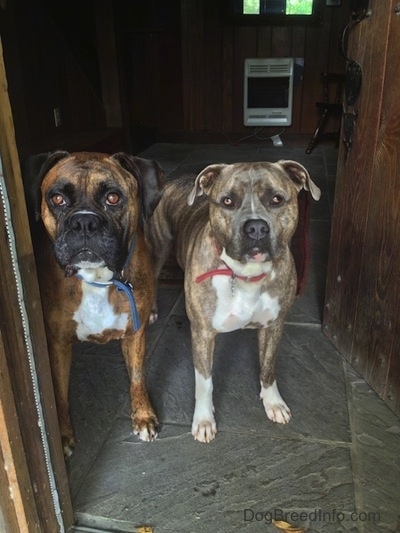
Walk over to the front door and open it. If the dog tries to go out stop him and just leave the door open as you stand there and teach him that an open door does not mean he can leave. Be sure to use common sense when training a dog. Do not do this if it is unsafe for the dog should you fail to communicate to the dog that it must stay and the dog gets out.

Go for a walk and ask him for respect. Respect at every entrance way and respect on the leash. Read The Proper Way to Walk a Dog
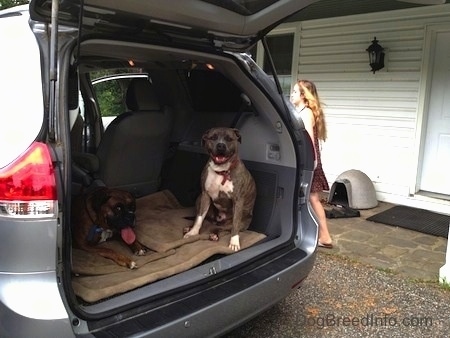
If the dog is in the car it needs to learn that just because the car door is opened it is not a pass to jump out. It must wait for some kind of command or signal that it is OK to get out.
These are just a few examples of ways to show true leadership and gain a mutual respect. Instead of making up fake scenarios and asking a dog to sit repeatedly when there really is no reason, go about life and ask it for respect in REAL situations.
Do things that are real. If you keep setting up fake things like only pretending to eat from his dinner dish just to show it you can or demanding it to sit every time you look at it, it is going to feel stressed and you are going to make things worse.
A true pack leader learns what a dog is saying by watching its actions and body language, taking into account how the dog interprets the actions of the human and creates a lifestyle of respect and good manners. To create a balance you also need to learn what natural instincts the dog has and satisfy them.
You don't want to make life miserable with punishments at every turn and set-ups that fail. You want to live in a way that shows leadership where all can be comfortable and relaxed at the same time. Calm, confident, assertive, and happy. Life must go on and the dog must fit into it.
Written by Sharon Rose© Dog Breed Info Center® All Rights Reserved